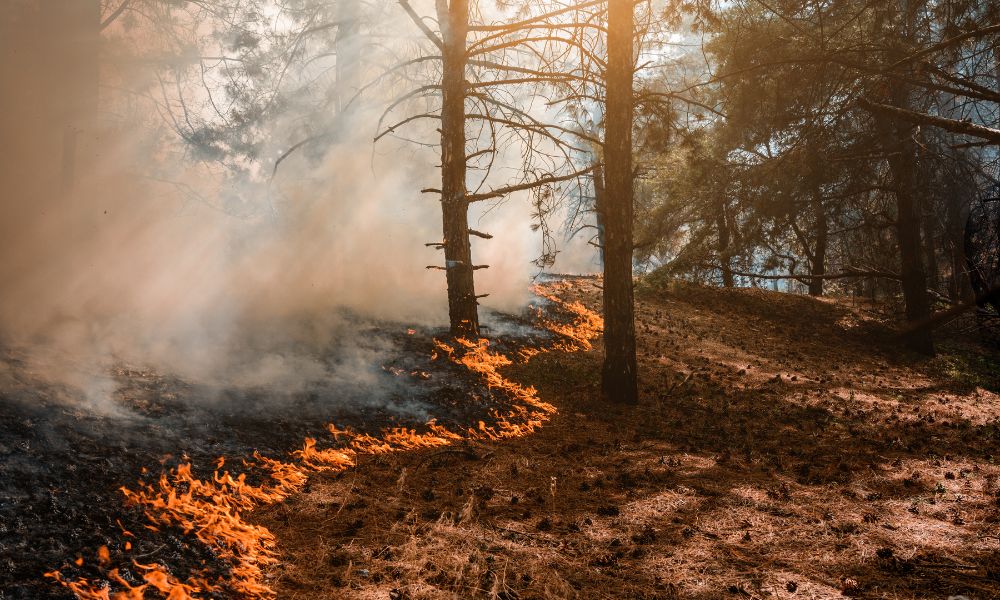
Various areas of wooded land experience wildfires annually that destroy everything in their paths. Some can argue that nature is doing what nature does, but others would say with the proper understanding of the elements, we can begin controlling and containing these occurrences. Below we explore the inner workings of fire and how humans can make a difference.
Inside the Tetrahedron
A wildfire or fire of any type cannot begin without the primary tetrahedron. This includes the three ingredients: oxygen, heat, and fuel. When these three elements coexist in the right extremes, a fire or wildfire can begin. It isn’t until one of these three elements diminishes or struggles that we can properly and thoroughly manage or extinguish a wildfire. For example, the heat must be reduced, the fuel must be isolated, or the oxygen supply must be cut for the tetrahedron to dismantle.
Oxygen’s Job
Oxygen is a primary source of ignition for a fire. A fire must have roughly 15–20 percent air to progress and burn. The oxygenation in ambient air hovers in the 20–25 percent range. When given enough time to grow and ruminate, air or oxygen can fuel a fire. One of the fastest ways to extinguish a fire is to suffocate its air supply.
Heat’s Job
A fire cannot be a possibility without a proper heat source. This is the primary source of ignition once the fuel and oxygen interact with the heat source. Commonly, warm, dry air is the heat source for a wildfire. Water is the most reliable way to contain the heat source, which is why rescue teams often turn to water first. The water helps reduce the amount of heat being fueled.
The Fuel
Fuel is the third and easily most containable source for wildfire ignition and spread. Fuel can be any combustible object or source in the direct line of sight for a fire. Landscaping, flammable objects, and the characteristics of pre-existing conditions, such as oxygen and heat, all contribute to the fuel saturation of a fire.
It’s also worth noting that the fuel saturation helps spread and further ignite wildfires. A common source of continued fuel or ignition is the wildfire’s embers and their spread. Embers are incredibly dangerous because they are sporadic in spreading and spark new heat sources on flammable objects, leading to rapid spreading.
Through education and understanding the various elements of wildfires, we can help mitigate their spread and stay aware of their possibilities. While not every wildfire can be stopped, humans can change many behaviors to avoid manual fuel sources and destruction.
